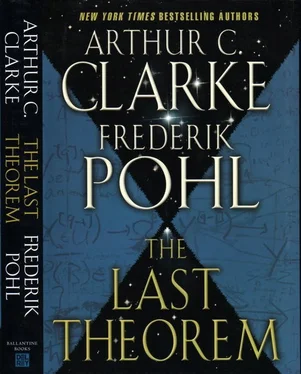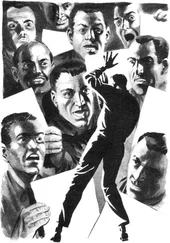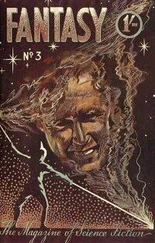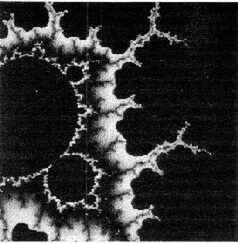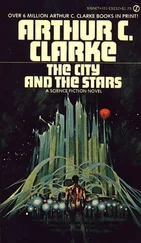He had just about convinced himself there had been no mistake when little Ada came back from her nap. She looked around for her aunt, but was sufficiently reassured when Ranjit waved an arm in the direction of where Myra’s arms and kicks were propelling her along.
Then Ada got herself a fruit juice and sat down to oversee whatever it was that Ranjit was doing.
By and large Ranjit preferred to be unwatched during his tussles with mathematics. Ada, however, seemed to have her own rules of audienceship. She didn’t wail about being kept on the beach, wasn’t even morose about it. When Ranjit bought her an ice from one of the beach’s wandering vendors, she ate it slowly, her eyes fixed on the things he was writing in his notebook. When she finished, she ran down to the water’s edge to wash the stickiness off her fingers before she asked politely, “Can I see what you’re doing?”
By then Ranjit was quite reassured about his use of the Germain formulation. He opened the notebook on the table before him, interested to see what she would make of the Germain Identity.
She studied the line of symbols for a moment, then announced, “I don’t think I understand that.”
“It’s difficult,” Ranjit agreed. “I don’t think I can explain it to you just now, either. However—”
He paused, examining her. She was a lot younger than Tiffany Kanakaratnam, of course, but then she had the advantage of a better educated and more sophisticated family. “Maybe I can show you something,” he said. “Can you count on your fingers?”
“Of course I can,” she said, just one moiety of courtesy short of indignation. “Look,” she said, raising one finger at a time. “One, two, three, four, five, six, seven, eight, nine, ten.”
“Yes, that’s very good,” Ranjit said, “but you’re only counting up to ten. Would you like to know how to count to one thousand and twenty-three?”
By the time he finished showing the child the all-fingers-extended binary representation of 1,023, Myra was back from her swim and listening as intently as Ada.
When he was done, the child looked at her aunt, now toweling her hair dry. “That’s quite good, don’t you think, Aunt Myra?” And to Ranjit, “Do you know any other tricks?”
Ranjit hesitated. His one other trick he had never even shown to Tiffany Kanakaratnam, but Myra was in this audience.
“Actually,” he said, “I do,” and moved off the boarded part of the bungalow’s lanai so he could scratch a circle in the sand:

“That’s a rupee,” he said. “Well, of course it’s really just a picture of a rupee, but let’s say it’s a real coin. If you flip it, there are two possible ways it can come down, either as heads or as tails.”
“Or, if it fell in the sand, it could land on edge,” Ada said.
He looked at her, but the child Ada’s expression was innocent. “So we don’t flip on the beach. We flip on a craps table in the casino. Now, if you flip two coins—”

“—each of the coins can come down either heads or tails. That means there are four possible outcomes. They can be heads-heads, heads-tails, tails-heads, or tails-tails. While if there are three coins—”

“—there are eight possibilities: heads-heads-heads, heads-heads-tails, heads—”
“Ranjit,” Myra interrupted him, smiling but with the faintest hint of annoyance in her voice, “Ada does know what two to the third power is.”
“Well, of course she does,” he said meekly. “Now, here’s the thing. You take this stick and draw in as many more coins to the line as you want to. I won’t look. Then when you’re done, within ten seconds or less, I will undertake to write down the exact number of possible outcomes if that number of coins are flipped. And,” he added, holding up one finger, “just to make it more interesting, what I’m going to do is let you cover up as many of the coins as you like, from either end of the line, so I won’t be able to tell how many coins are there.”
Ada, who had been listening carefully, said, “Wow. Can he do that, Aunt Myra?”
Myra said firmly, “No. Not if he doesn’t peek or cheat in some other way.” Then, to Ranjit, “You aren’t going to peek?”
“No.”
“And you won’t know how many coins are actually in the row?”
He pursed his lips. “I didn’t say anything about what I would know… but, no, I won’t.”
“Then it’s impossible,” she declared. But when Ranjit invited her to put him to the test, she made him turn around and set Ada to watch his eyes to see that he wasn’t making use of some accidental window that could serve as a mirror. Then she swiftly smoothed most of the coins out of existence, leaving just three. She winked at Ada, and then draped her beach towel so that it covered two of the remaining three, and also covered a full meter of no coins at all—

—and said, “You’re on.”
Ranjit turned slowly, as though he had all the time in the world, while Ada squealed, “Hurry, Ranjit! You only have ten seconds! Or five, now. Or maybe only two—”
He gave the child a smile. “Don’t worry,” he admonished. He leaned forward and for the first time glanced at where the row of circles had been, took the stick, and at one end of the row scratched a straight line. Then, as he was removing Myra’s towel, he said, “There’s your answer,” and grinned. “Huh,” he said, admiring the result. “Very clever.” He waited for a reaction from Myra to the drawing in the sand—
1000
Myra stared in puzzlement for a moment, and then her expression cleared. “Oh my God! Yes! It’s the binary number for—wait a minute—for the decimal number eight! And that’s the right answer, too!”
Ranjit, still grinning, nodded and turned to Ada, now a little apprehensive. Should he explain again how binary notation worked—1, 10, 11, 100 for one, two, three, four? He hesitated.
But the child’s lips had broken into a smile. “You didn’t say you were going to go binary, Ranjit, but then you didn’t say you weren’t, either, so I guess that’s all right. It’s a good trick.”
She delivered her verdict with enough adult gravity to sustain Ranjit’s smile. His curiosity was piqued, though. “Tell me something, Ada. Do you really know what binary numbers are?”
She became mock-indignant. “But of course I do, Ranjit! Don’t you know who Aunt Myra made my parents name me after?”
Myra was the one who responded to Ranjit’s puzzled look. “I’m guilty,” she admitted. “When my sister and her husband couldn’t agree on a name for the baby, I suggested Ada. Ada Lovelace was my heroine and role model, you know. All of my friends fixated on women like Shiva or Wonder Woman or Joan of Arc, but the only woman I wanted to be just like when I grew up was Countess Ada Lovelace.”
“Countess—” Ranjit began, and then snapped his fingers. “Of course! The computer woman in, when was it, the 1800s? Lord Byron’s daughter, who wrote the first computer program ever for Charles Babbage’s calculating machine!”
“That one, yes,” Myra agreed. “Of course, that machine never got built—they didn’t have the technology—but the program was good. She’s why they named the software language Ada.”
The daily beach drive had become a fixed date, and then Ranjit thought of a way to make it even better. De Saram had opened a line of bank credit for him, based on the anticipation of his father’s estate, which meant not only that he then had an actual bank account with actual rupees in it that he could spend, but meant he had a credit card as well. Ranjit had noticed the beachside restaurants up above the tree line, and decided to take Myra to dinner.
Читать дальше
Конец ознакомительного отрывка
Купить книгу
